

Page 2 of the Online Edition of the 2011-2012 Harvey Reid Newsletter...
Go to Page 1 of this Newsletter / Read old newsletters
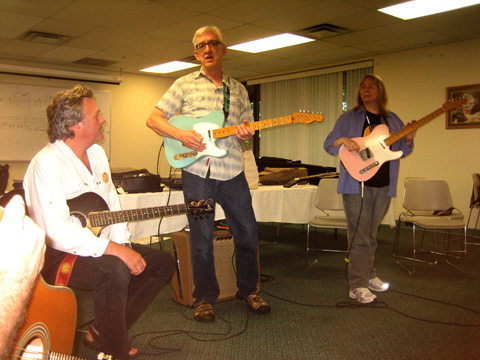 |
Summer Guitar Camps Are A Blast- In spite of the busy schedule and constant late-night fun, I managed to survive and thrive for a week in Elkins WV in 2011 teaching guitar at the Augusta Heritage Workshops “Guitar Week.” Here I am in a thoughtful moment with the other instructors Bill Kirchen (of Commander Cody guitar picking fame) and multi-talented Marcy Marxer. Guitar hero & coordinator Mary Flower took the picture and should have been in it. |
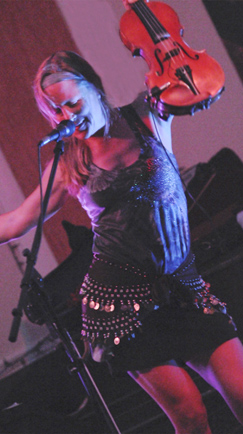 |
Hello From Joyce Andersen |
| Motherhood is the Necessity of Re-invention, so I got inventive. Enter the Violin Troubadour gettin’ her Swerve on! 20 years of musical adventures: side gal fiddlin’, folk duo touring, band leader struttin’, singer-songwriter coffeehousin’ and restless genre-crossing has all led me to a new exciting live solo sound. In 2000 I recorded my first solo violin/vocal songs on “The Girl I Left Behind” and they have remained some of my most requested. I made 4 CDs as a guitar-strumming singer-songwriter who also played the fiddle. But it’s hard, on stage, to be your own side-gal, launching into a fiddle break when you’re on guitar. 2 years ago with the boys tucked in bed, I started figuring out how to do it all in a solo show. Harvey pulled out his old electric guitar gadgets and we explored some new rockstar gear to see how it would translate to the fiddle and viola. With the excitement of an artistic re-birth, I began writing, arranging and jamming day and night, playing in new ways, fueled by old & new songs, a love of improvisation, a big dose of electric guitar envy, the desire to rock (with no time for a band) & a deep connection to that mysterious magic that gets you playing music in the first place... Now it’s a CD called Swerve, all recorded live, all solo, just like I do it on stage, and best of all, my die-hard fans are loving it. With a tambourine under my left heel and my right foot on a kick drum, I can back up a torch song on jazz bass, play old-time fiddle tunes like never before, rock out on a Hendrix tune, or compose a bed of string lines over one of my new strummed fiddle groove-loop songs. With the beauty & tone of an instrument perfected centuries ago flaoting inside new sonic landscapes I generate with my gear, I feel like an explorer, and I am able to go to musical places and improvise in ways I never dreamed of. And yes that is a belly dance coin skirt in the photo... Join me! Get Your Swerve On! |
|
www.joyscream.com |
You probably know by now that my most recent musical endeavor has been to expand my efforts to stake out a corner of the guitar world, and to educate as many people as I can about the hidden world of new music that you get from partial capos.
Add to this the fact that partial capos not only allow good players to do amazing things, but they also allow intermediate players to play all kinds of music that they otherwise could not do, and possibly best of all, partial capos can be used to greatly simplify chord fingerings and allow beginners, children and people with special learning situations or hand injuries to play great-sounding guitar music and be the life of the party if they want to.
www.partialcapo.com |
|
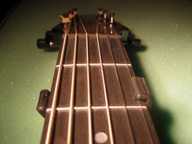 Woodie's G-Band Capo Woodie's G-Band Capo |
|
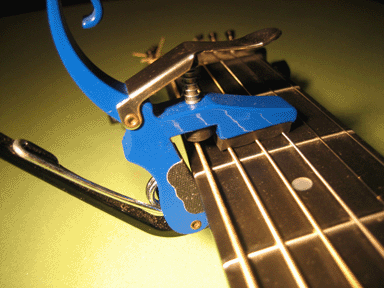 Kyser "K-Lever" Capo Kyser "K-Lever" Capo |
|
|
It happened again. I complained in my last newsletter about being unable to find a lot of good music I wanted to buy. I just came across my tattered copy of a record I have always been fond of, titled “Soul of a City Boy” by Jesse Colin Young. He recorded it in one day in 1965, and I have always thought it was as good an example as anything out there of how to make a great record quickly without overdubs or studio trickery. Just sit down with your guitar and sing some songs. I went to the computer to buy a digital download copy. No luck. Not available. So I thought I would buy a CD so I would not have to listen to the scratchy old vinyl. No such luck. Out of print, and the cheapest used copy I could find was over $200. What is going on? He is a well-known guy. It’s a great work of art. Why can’t anybody buy it? I understand that people are not pressing recordings, but that’s the problem the digital download thing is supposed to solve. |
| A Workshop Moment In conjunction with my big project to assemble and propagate the information on using partial capos on guitar, I have started doing some in-store workshops to spread the word and let people see and hear up close what is going on. Here is a moment from a workshop at Stuzman’s Guitar Center in West Rochester, NY where I am showing a 2-capo-with-retuning trick to Dave Stutzman himself. (Photo: Charles Collins) | 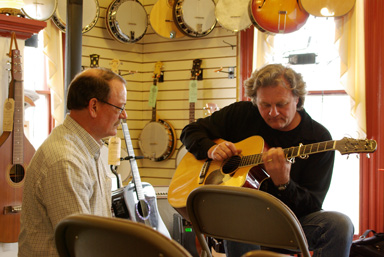 |
 |
I’m sure all of you are feeling some anxiety about the future, no doubt due to the cataclysmic changes going on around us and the sense of acceleration we’re also feeling. Society, the economy, the political situation– it’s all in flux and all of our crystal balls are cloudier than we would like.
|
It’s exciting that so much of what people are watching on YouTube is musical performances and not just Sneezing Baby Panda and Charlie Bit My Finger videos. YouTube is also causing a big change in how we appreciate music, and the old-fashioned idea of watching someone play well is at the center of it. You can’t watch Steely Dan painstakingly piece together their perfect studio recordings. The corporate hand that stocked the record store shelves and made the radio playlists all through my lifetime is losing its grip on us. Things are chaotic now, but I can’t help but feel that they are headed in a culturally healthy direction, even though my own income and sales of recordings are down.
|
This web site
concerns the music and life of acoustic musician, writer & music educator Harvey Reid.
If
you don't find what you want, or if you have comments or questions, please email
to ![]()